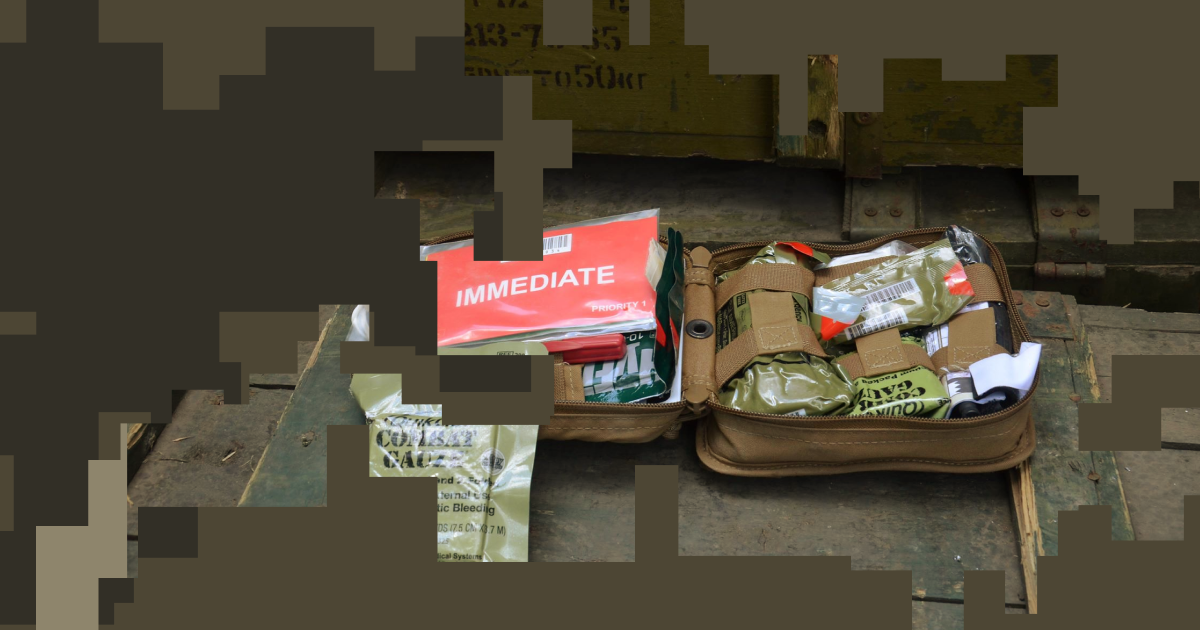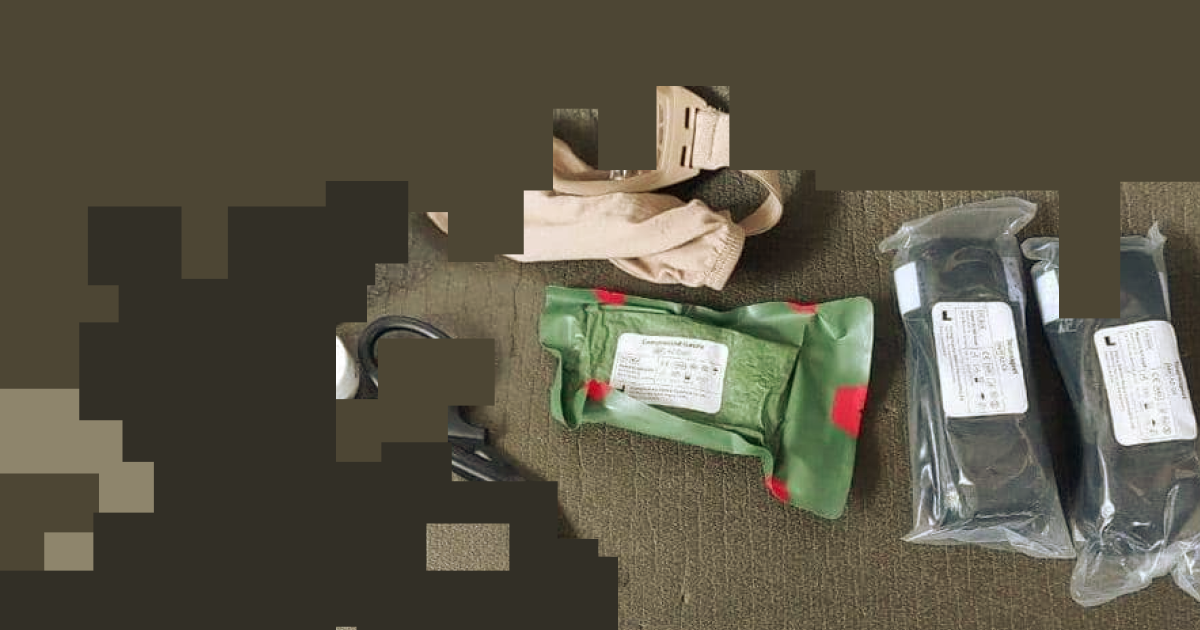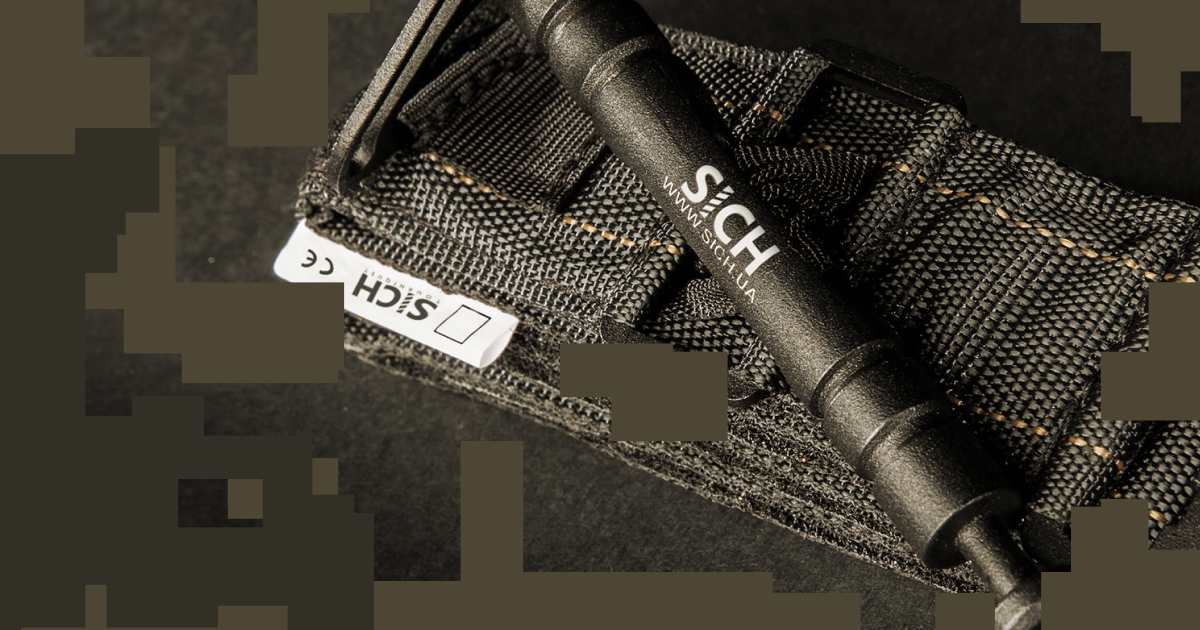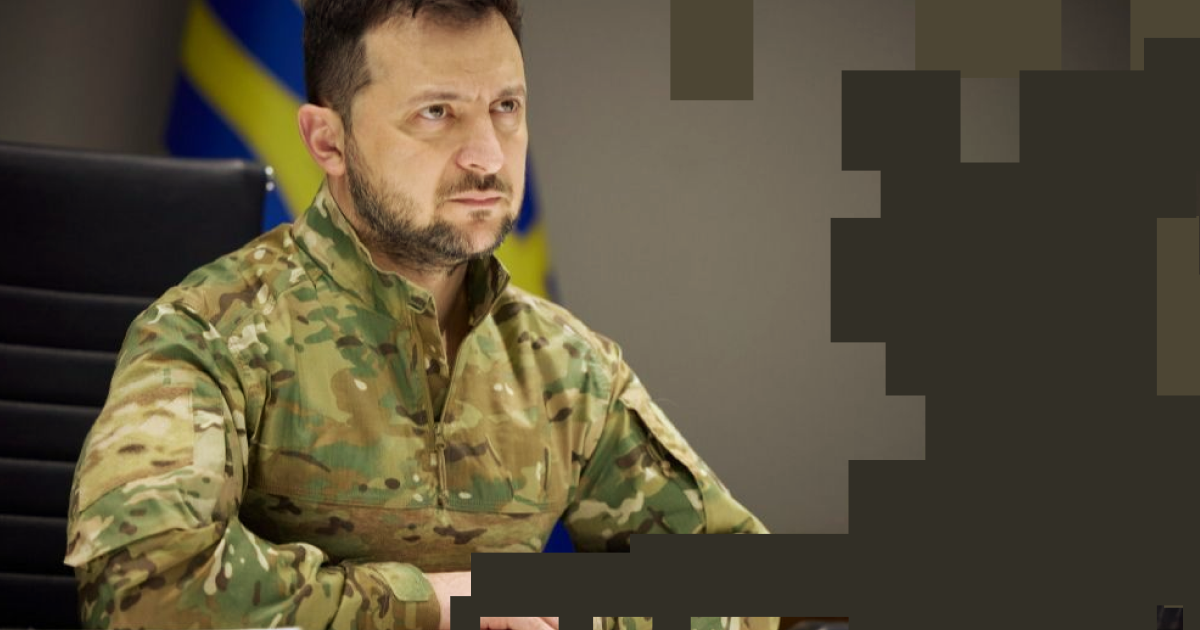Inaction that kills. Medical Forces Command saves money on military first aid kits

When a soldier is injured on the battlefield, a tourniquet is applied to stop the bleeding and give them time to evacuate to a stabilisation point. A high-quality tourniquet for less than $20 saves one life. However, the Medical Forces Command of the Armed Forces of Ukraine supplies tourniquets that break apart and do not create the necessary blood pressure. Instead of acknowledging the problem, they deny it.
In this article, we explain how the supply of low-quality first aid kits highlights the consistent inaction in the work of the Medical Forces and the need for reforms in tactical medicine.
Fighting to Save Lives
After July 20, doctors and volunteers began to report on the supply of low-quality first aid kits to the frontline by the Medical Forces Command of the Armed Forces of Ukraine. Images of Chinese tourniquets distributed in military units appeared online.
Oksana Karchynska, a volunteer and coordinator of the frontline stabilisation centre, told Espreso TV channel that the military had received over 40,000 low-quality Chinese tourniquets.
I was shocked when medics at the frontline stabilisation points started telling me that three tourniquets had ripped on wounded soldiers. We started an investigation. It turned out that many of the soldiers taking part in the counter-offensive had received those fakes. The medical kits with low-quality tourniquets were received from the Armed Forces Medical Forces of Ukraine medical supply warehouse. These fakes cost $1 on the Chinese black market,
Karchynska said.
Medical instructor Mariia Nazarova, People's Deputy Sofiia Fedyna, and Leleka Foundation coordinator Yurii Kubrushko also wrote about the tourniquets. Dana Yarova, a member of the Public Anti-Corruption Council at the Ministry of Defence, says that all medical equipment is purchased not by the Department of Public Procurement but by the Medical Forces Command.
On July 21, the Command issued two statements:
- "They did not purchase the kits — they came as aid from international partners.
- After the statement by the head of the medical service of one of the military units, an internal inspection was conducted, which showed that the tourniquets were fine and of proper quality.

The information on low-quality first aid kits is not new for volunteers. But now we have seen the reaction of the Medical Forces Command. It is clear from the positions they have voiced that they will not solve the problem. Instead of admitting that there is a problem, they are trying to manipulate and pretend that everything is fine. As if there is a problem with one batch in one division, but it is not yet certain, and everything else is fine. This signalled that we should not expect anything good from the Medical Forces Command, the Ministry of Defence or Internal Affairs. That's why we decided to talk about it publicly,
says Yurii Kubrushko, Leleka Foundation.
Instructor Mariia Nazarova writes that they did not report the poor quality of the equipment before because they understood that the state, which had not prepared stocks for eight years, would not be able to provide everyone with medicine at once at the start of the full-scale war. The military and volunteers took care of their first aid kits. But the Command should have resolved this issue in a year and a half.
We saw that there was no sorting and qualitative analysis system of what was being transferred to the frontline in Ukraine. Everything the state has bought, received from other countries or given by individual benefactors is of different types of quality, mostly of low quality. Many people want to help but are not experts in tactical medicine. Therefore, if a notional charitable foundation from Germany decides to help Ukraine, and they hear somewhere that tourniquets are in need, they usually buy something cheaper and simpler,
says Yurii.
Svidomi sent a request to the Medical Forces Command to find out the types and origin of the tourniquets and whether they were tested before being issued to the units. As of the time of publication, we have not yet received any response.
Can everyone be provided with high-quality tourniquets?
There is no single quality standard for medical kits in Ukraine. It was only after volunteers and medics were outraged by poor quality tourniquets that the Medical Forces Command initiated a working group to adopt one.
The volunteers follow the recommendations of the US Department of Defence's TCCC (Tactical Combat Casualty Care) Committee.
The quality of the tested tourniquets includes:
- CAT (Combat Application Tourniquet) from North American Rescue;
- SOF TT (Special Operation Forces Tactical Tourniquet) from Tactical Medical Solutions;
- TMT (Tactical Medical Tourniquet) from Combat Medical Systems;
- SAM XT (Extremity Tourniquet) by SAM Medical;
- SICH Tourniquet by the Ukrainian manufacturer SICH.
If we are talking about a one-off, instantaneous supply of tourniquets to provide them to the entire army, it is impossible within a day. But if we work consistently with international partners, it would take several months. Last spring, I contributed to the purchase of about 150,000 original CAT tourniquets. The capacities of American factories and the Ukrainian Sich allow us to produce 100-200 thousand tourniquets every month. Therefore, it is quite possible to provide everyone with them,
says Yurii Kubrushko, coordinator of the Leleka Foundation.
The wholesale price of Ukrainian Sich tourniquets is $15, while the price of American manufacturers is about $17-18. Yurii estimates that supplying the entire army could cost $30-40 million.

This is a small amount compared to how much the state spends on treatment, rehabilitation or social benefits for the wounded. The victims' families are to be paid 15 million hryvnias, or about $400,000. This is instead of buying four turnstiles for $60. Not to mention that people are the most valuable thing in the army and must be protected,
the volunteer concludes.
Eight issues of tactical medicine
When it became clear that the Medical Forces Command did not want to face and would not solve the problems, volunteers began to talk about them more publicly. We wrote an appeal to the military leadership on eight tactical medicine issues in the Defence Forces.
1. No quality control of medical supplies provided by the state to military units
There are no requirements for tactical medicine approved by the Ministry of Defence. Everything purchased and received as humanitarian aid is transferred to combat units without proper quality control or compliance with the recommendations of the TCCC Committee. This organisation is the world's most authoritative source of tactical medicine and developer of relevant standards. Due to the lack of control, low-quality medical supplies are reaching the military, which is why the number of casualties in the army is growing.
2. Medical supplies accounting and write-off procedures are bureaucratised
This leads to delays or prevents military units from writing off medical supplies used or lost during hostilities. Paperwork distracts medics from saving lives and creates additional workload and stress.
3. Statistics and reporting in the field of tactical medicine supply do not reflect reality
For example, Chinese analogues are often sent under the "CAT tourniquet" inventory name. There is hardly any provision of combat medics with the means necessary to provide care at their level. In fact, brigades with the required equipment on paper often have fewer backpacks, first aid kits, and tourniquets.
4. Shortage of vehicles
The wounded are often evacuated by personal vehicles or those donated by charities and volunteers. These vehicles are almost entirely stocked with medical equipment and machinery obtained through volunteer assistance. At the same time, military units face a complicated and lengthy procedure for writing off vehicles, equipment and medical supplies destroyed or damaged during hostilities.
5. Tactical medicine training is conducted with deviations from the standards
Deviations from the TCCC standards make it difficult to unify the process of providing care on the battlefield. Professional training of platoon combat medics for all types and branches of the armed forces is provided by only one military unit with a capacity of up to 300 cadets per month. Military units are poorly equipped with tactical medicine training equipment, and instructors often lack proper training.
6. Outdated and harmful treatment guidelines are used
Due to the submission or inaction of the Medical Forces Command, treatment guidelines do not comply with the principles of evidence-based medicine and the standards of the Ministry of Health and partner countries. In particular, such guidelines include the protocol for treating acubarotrauma (concussion) introduced by the Command. This leads to wasted money on unproven drugs and ineffective treatment.
For example, the militaries still get the opioid analgesic Nalbuphine. If injected during an injury at the front, when the soldier is taken to the operating theatre or a medical centre in a few hours, other painkillers will not work. In addition, the effect of Nalbuphine can lead to airway blockage.
7. The command excluded combat medics from the list of people who can use blood for treatment
The Medical Forces Command has accused combat medics of "illegal medical activities". Even though the military speciality of a combat medic has existed for over six years, the legal status of a medical professional has not yet been regulated. The charge of illegal medical activity will apply to most manipulations a combat medic performs following the qualification standard.
In addition, the Medical Forces Command has not procured the equipment and supplies necessary for blood transfusions. Those units that do conduct blood transfusions rely only on volunteers.
Note: Following the publication of the volunteers' appeal, on August 3 Deputy Minister of Defence Hanna Maliar said during a national telethon that combat medics would be entitled to perform blood transfusions after receiving training from the Ministry of Health.
8. Outdated or non-existent legal framework
This provides a wide scope for abuse and inaction by officials who are supposed to provide the Defence Forces with quality medical supplies. There is no state body that would be a leader and bear responsibility for the comprehensive provision of tactical medicine, the organisation of proper training of combat medics and personnel, the organisation of evacuation of the wounded and the provision of vehicles for medical evacuation.
Volodymyr Zelenskyy responded to the problems. He noted that he had "had an important conversation" with the commander of the Medical Forces, Tetiana Ostashchenko, "about the issues that are of acute concern to combat medics and soldiers".

On July 31, the Verkhovna Rada Committee on National Security, Defence and Intelligence summoned Ostashchenko. They gave him two weeks to check all the first aid kits and replace the low-quality medical supplies.


